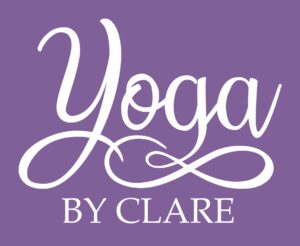Well it’s April, Spring, and like all good yoga teachers, I intended to write about the connections between Spring and a jolly good clean up, Spring being the time of year for getting your metaphorical house in order, ready for new growth and transformation. Yoga has a special term for this kind of spiritual cleansing – saucha.
I even had a plan to spring clean our office (a.k.a. The smallest bedroom where we dump all the furniture, bric-a-brac, books and unplayed musical instruments that have no other place to be) as a way to stimulate the writing nerve. After all conventional wisdom would say, start with the possible, take the first step.
But then it all went horribly wrong because 1st April is, as you know, April Fool’s Day. For some reason I don’t fully understand, laughter seemed like more fun than cleaning. Weird eh?!!
So what exactly is laughter?
Wikipaedia tells us that “Laughter is a pleasant physical reaction and emotion consisting usually of rhythmical, usually audible contractions of the diaphragm and other parts of the respiratory system”.
Laughter is the sound of happiness, an emotional response to something funny in our environment, external or internal. It can, too, mask less comfortable emotions like anxiety and fear. It consists of a series of muscular contractions in the face, throat, chest and abdomen, leading to irregular air intake and gasping for breath. It is often accompanied by the familiar ‘ha-ha-ha’ sound and may even provoke tears.
When we laugh we use many different parts of our brain. The left hemisphere investigates the words, logic and structure of the situation. The massive frontal cortex adds on emotions. The right hemisphere works out the intellectual basis for the humour. But it seems to be the deeper Limbic system, which regulates emotions and behaviours, that stimulates the motor cortex to take the actions we construe as laughter.
According to the Tinterweb Boffins, the average adult laughs 17 times everyday. But why?
Why do we laugh and how is laughing like yoga?
She’s such a laugh
You know those nights out with friends or family, don’t you? When you just don’t stop laughing. Or those hilarious family stories that get re-hashed every holiday and make everybody giggle? It seems that laughter really does bring us together and strengthen social bonds. The closer we are to people, it seems the more likely we are to laugh together, and the more we laugh together, the closer we get.
“Everyone laughs in the same language” Jakob Smirnoff
For me yoga is not about throwing the perfect shapes (if only I could), it is about building community. It is about trying a balance, wobbling (a bit) and giggling (a lot). It is seeing the ridiculous in attempting a frog shape, or a squat. It is about finding friendships and sharing a laugh. Afterall, as my old Tai Chi teacher used to say “Laughter is the sound of energy flowing”.
I laughed until my slides split.
It seems that laughter is a great physical workout. The online experts also mention that 100 laughs is the same as 10 – 15 minutes on the running or rowing machine. Have you ever laughed so much that your sides hurt and you’re almost begging it to stop? That is your diaphragm (your main breathing muscle) and all the muscles between your ribs getting a whole lot of accustomed exercise.
Laughter also works your facial muscles, legs, arms and abdomen. Phew! No need for abdominal crunches then. And it also helps to increase your oxygen intake, a natural energy shot.
Of course, I don’t need to repeat the physical benefits of a regular yoga practice. Yoga not only works parts of your body that other exercise approaches simply don’t reach, it also has a whole discipline related to breath. Just so you can learn how to manage your energy; you can be the life and soul when you need to be, and calm when you need that feeling too (like bedtime).
Laughter is the best medicine
Laughter also has the power to heal. When we laugh, we reduce the levels of stress hormones like adrenalin and cortisol. At the same time, we release feel good chemicals like serotonin and dopamine. Science has shown that laughter reduces pain and other symptoms in diseases associated with chronic stress.
It can also improve immunity, increase the number of antibodies we have and even stimulate the cells that help to clear tumours in cancer. There is a reason we ask ourselves to look on the bright side of life. (Cue song!) Laughter increases our resilience in the face of life’s ups and downs.
In short, laughter helps us to regulate our nervous system and move from our fight-flight response (stress) to our rest-digest (relaxed) response. Physiologically, through sound, movement, breathing and community, laughter like yoga, stimulates our vagus nerve, the nerve most closely associated with emotional regulation.
So back to April Fool’s Day.
Try as I might, I can’t find a widely accepted origin story for this tradition. The most common seems to be that it aligns to the shifting of calendars in the 16th Century with those not following the new calendars being considered ‘fools’. But as with laughter, the tradition is found across the world.
So too is the character of The Fool. In Tarot, the Fool is not about silliness but more about being able to see beyond logical thought, delving inside ourselves to find the wisdom within. Perhaps to be able to poke a little fun at life’s illusions, seeing them for what they are. The Fool is about optimism and freedom, as we would say, thinking outside the box.
So if we must Spring clean, clear out our old ways to embrace the new, to grow, then why not do it with a little light heartedness and humour? It seems after all, there is wisdom in laughter. And just a little wisdom in our inner Fool as well.

